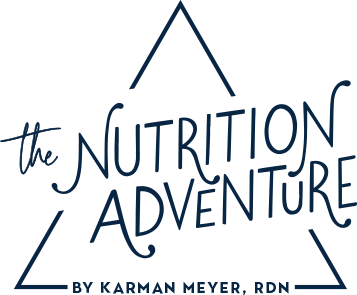Sneaky Sodium
Which has more sodium: 1 oz of oil-roasted, salted peanuts, or 3/4 cup (1.1 oz) Kellogg’s Frosted Flakes ®? Have your answer?
Some of you may be surprised to know that the cereal (140 mg) has MORE sodium than salted peanuts (90 mg). But how could that be?! Sodium can be very, very sneaky….
Salt (sodium) is used as a preservative, which can be found in all processed foods to help extend the shelf-life of a product. Preserving foods with salt, such as meat and vegetables, is what got our ancestors through the long winters and years of bad harvests, so I’m not knocking the process of preserving foods—without it we may not be here today! Food additives and flavorings, such as monosodium glutamate (MSG), are other sources of sodium in processed foods. Frozen dinners, snack foods, even “fresh” chicken are pumped full of salty additives.
Most Americans consume 3,000-4,000 milligrams (mg) of sodium a day—that’s twice as much as we need! Excess sodium, along with being overweight or obese, can cause an increase in blood pressure (hypertension), which over time causes the arteries to harden (atherosclerosis) leading to heart disease. The 2010 Dietary Guidelines for Americans recommends 2,300 mg (equal to 1 teaspoon) of sodium a day, and 1,500 mg for those 51 and older, and individuals of any age who have hypertension, diabetes, or chronic kidney disease. Fifty-percent of Americans should be limiting sodium to 1,500 mg/day. So where do you fall…2,300 or 1,500 mg/day?
Now that we know how our daily sodium allowances, what’s next? Reading nutrition labels and getting nutrition information from restaurants. I’m challenging you to look at the foods in your pantry and fridge, go online and find the nutrition facts for foods at your favorite restaurants—you will definitely learn something! The good news is that there a plenty of low-sodium, no salt-added variations of most foods today, and they taste just as good as their salt-laden counterparts. Bacon, canned vegetables, soups, pasta sauces, lunch meats, salad dressings, cheeses, all of these have low-sodium alternatives that can help you reduce your risk of hypertension and heart disease. Here are some other tips to help you cut back on the salt:
- Buy fresh or plain frozen vegetables
- Use fresh poultry, fish, and lean meats, rather than canned meats
- Use fresh herbs, spices, and salt-free seasoning blend in cooking and at the table
- Cook rice, pasta, and hot cereals without the salt and limit flavored pasta and hot cereal packets
- Rinse canned foods, such as beans, vegetables, and tuna to remove up to 40% of sodium
- Choose foods that contain 400 mg of sodium or less per serving
I’d love to hear any tips and tricks you use to keep sodium in check! If you are accustomed to a high-salt diet, it may take some time to adjust to a lower-salt diet, but it IS possible and you’ll be better off for it!
Learn More about Salt!:
- Chicken’s Salty Little Secret-Nutrition Unplugged
- Hold the Salt! New food rules lower sodium limits-Elisa Zied
- How Much Salt is in Restaurant Food?-Cancer Dietitian
- Sodium: How to tame your salt habit now-Mayo Clinic
Coming Up Next: Exercise & Heart Health

